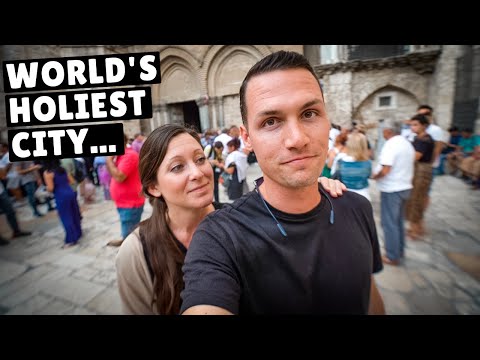
When traveling to Jerusalem, especially the venerable Old City, every visitor carries a suitcase filled with expectations. Many anticipate a solemn bastion of ancient holiness, walls echoing millennia of prayers and battles fought in the name of faith. Others might expect tensions visible at every corner, reflecting the region’s complex geopolitical puzzle. However, what many find upon stepping through the historic gates is not just what was expected—a city seeped in history and conflict—but a vibrant, living community where the past and present coexist in unexpected ways.
#### A Convergence of Narratives
Located in the heart of Jerusalem, the Old City is encapsulated within imposing stone walls dating back to Ottoman times. It is divided into four distinct quarters: Jewish, Christian, Muslim, and Armenian. Each quarter reflects its own unique culture, tradition, and history, making it feel like several small towns contained within one large fortress.
Visitors are often surprised by how these quarters manage to maintain their distinctiveness while coexisting side by side. Walking through narrow alleys from one quarter to another feels akin to time travel or crossing borders within minutes. The Jewish Quarter with its ancient synagogues and lively yeshivas (Jewish educational institutions) unfolds into the bustling Arab Market in the Muslim Quarter where spices and textiles color the scene.
#### The Pulse of Daily Life
What strikes many visitors is how normal life seems here amidst such historic and religious significance. Children play soccer in courtyards shadowed by sacred sites like the Western Wall or Dome of the Rock; families shop for groceries; men and women hurry to work or school. This normalization of life against a backdrop of iconic religious landmarks shifts many visitors’ perspectives from imagining this area as merely a museum or battleground to seeing it as a living city.
#### Religious Celebrations: A Spectacle for All
The convergence of important religious sites such as The Church of the Holy Sepulchre, The Western Wall, and The Al-Aqsa Mosque means that on any given day you may witness a procession or religious ceremony that is centuries old. Easter processions and Ramadan nights bring with them an air charged with devotion that even non-believers find profoundly moving.
Tourists come expecting strict solemnity but often encounter celebratory expressions of faith: from Jewish Haredi children dancing during Passover to Christian pilgrims walking Via Dolorosa bearing crosses on Good Fridays. This display of devotion alongside everyday normalcy offers a unique lens through which one can view Jerusalem.
#### Culinary Crossroads
Another unexpected joy found within these ancient walls is culinary diversity—a fusion that has occurred not only through current global influences but historical conquests as well. From traditional Middle Eastern dishes like falafel and hummus found in most cafes to Armenian bakeries offering lahmajoun (a type of flatbread topped with minced meat), food becomes another gateway into Jerusalem’s layered histories.
#### Political Overtones Amidst Tranquility
Despite its beauty and vibrancy, it isn’t possible to completely detach from political realities evident in heavy security presence or graffiti echoing peace cries or resistance slogans depending on where you stand within these walls. However many find that daily interactions with locals offer more nuanced views than what broadcast media portrays outside this small city-state.
#### An Enduring Impression
Jerusalem’s Old City doesn’t conform easily to preconceptions; rather it challenges them at every corner turn—through children playing by ancient stones or shared taxis negotiating narrow lanes filled with tourists from around the globe all seeking something profound yet encountering simplicity intertwined with complexity.
In conclusion, beyond being just an archaeological treasure trove or a hotspot for geopolitical debates—Jerusalem’s Old City remains primarily a home for its inhabitants—a place where centuries-old practices are alive; ensuring visitors leave not just with photos but stories mingling surprise with enlightenment.
